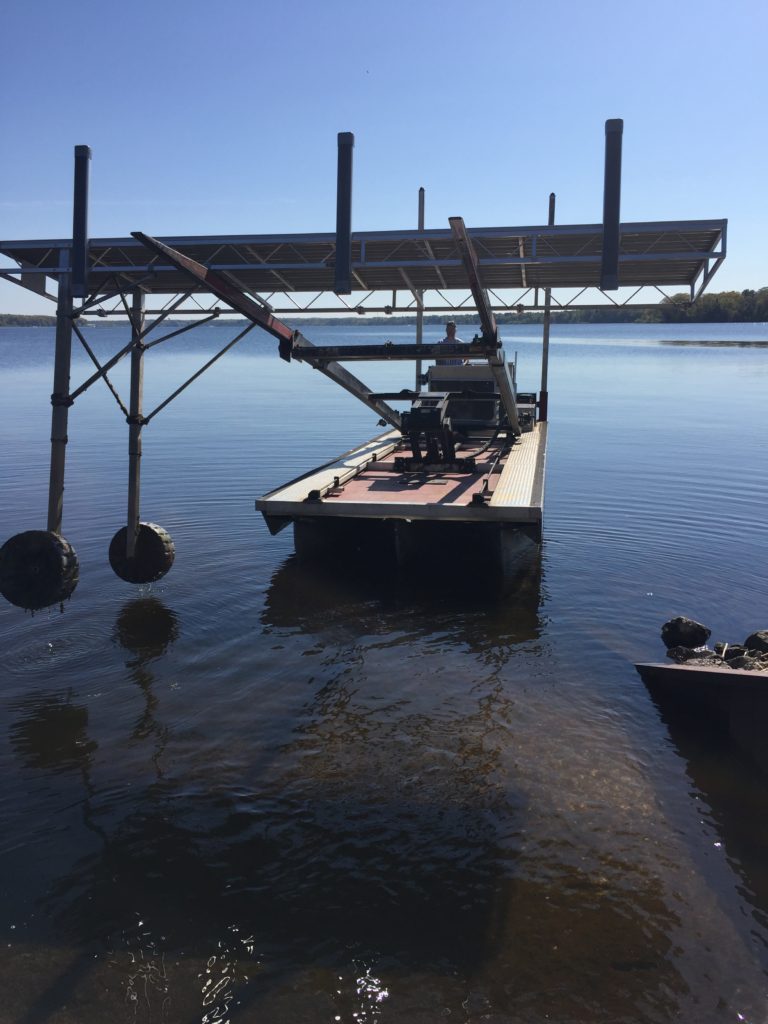Efficient Dock Repair Service Techniques: Making Certain Architectural Stability
Making sure the structural stability of docks through effective repair methods is vital for the durability and safety of marine facilities. This entails a multi-faceted strategy beginning with detailed evaluations utilizing advanced technologies like finder devices and remotely operated vehicles (ROVs) to detect both noticeable and hid problems. Consequently, choosing the ideal fixing products, such as corrosion-resistant alloys and composite products, is important for longevity. Architectural support techniques, consisting of the execution of cross-bracing systems and load-distribution plates, play a crucial function in mitigating tension points. Nonetheless, the value of these strategies comes to be obvious when exploring advanced repair approaches and preventative upkeep techniques.
Analyzing Dock Damage
Assessing dock damages is an essential first action in guaranteeing the architectural integrity and safety and security of any type of docking center. This preliminary evaluation includes a comprehensive assessment to recognize both noticeable and covert problems. Key elements to check out consist of the dock's foundation, pilings, outdoor decking, and equipment. Each element has to be scrutinized for indications of wear, rot, deterioration, or various other forms of deterioration that might jeopardize the architectural honesty.
Structural designers or certified assessors commonly execute these analyses utilizing specialized techniques and tools. Undersea assessments may utilize finder devices or remotely operated cars (ROVs) to discover submerged damage. Above water, aesthetic examinations are enhanced by using wetness meters and various other analysis tools to uncover underlying issues not instantly visible to the naked eye.

Finding Repair Service Products
Selecting the proper repair materials is an essential action in the dock repair procedure, one that directly affects the long life and performance of the fixed framework. Product selection should be driven by variables such as environmental problems, load-bearing needs, and compatibility with existing dock components. For instance, wood is a typical choice for docks due to its natural strength and aesthetic charm. Picking the appropriate kind of wood, such as pressure-treated lumber or naturally rot-resistant species like cedar or teak wood, is vital to stand up to water environments.
Along with timber, composite materials are increasingly prominent due to their resilience and reduced maintenance needs. Composites, generally made from a mix of plastic and wood fibers, offer superb resistance to rot, insects, and UV damage. For metal anchors, selecting corrosion-resistant alloys such as galvanized steel or marine-grade aluminum is important to prevent rust and guarantee architectural stability in saline water conditions.
Epoxy materials and marine-grade sealants are indispensable for fixing splits and sealing joints, providing a waterproof obstacle and enhancing the dock's total strength. By thoroughly selecting top quality products, dock repair work can achieve resilient outcomes, consequently safeguarding versus future degradation and guaranteeing secure, trustworthy use.
Architectural Support Methods
Efficient architectural reinforcement methods are essential in ensuring the stability and longevity of dock repair services. This approach is specifically effective for docks revealed to hefty lots or rough ecological problems.
One more necessary method is the application of fiber-reinforced polymers (FRP) These products provide high strength-to-weight ratios and excellent resistance to deterioration, making them ideal for reinforcing concrete or wood docks. FRP can be applied in strips or sheets and bonded with epoxy resins to enhance structural honesty.
Supporting and securing systems additionally play an important function in architectural support. Cross-bracing, using steel or wood beam of lights, can counteract side forces, reducing guiding and motion. Anchoring systems, such as helical piers or driven heaps, supply a stable structure by transferring tons to deeper, a lot more steady soil layers.
Lastly, the combination of load-distribution plates can assist distribute weight more evenly throughout the dock's surface area, alleviating localized tension factors. These methods jointly ensure that anchors continue to be risk-free and durable, efficient in holding up against the rigors of their operational environment.
Advanced Repair Service Approaches

Another advanced technique involves underwater welding, which permits repairs to be conducted without the need to dewater the area. This approach is particularly advantageous for dealing with structural problems in submerged dock components, guaranteeing very little interruption to operations. Enhanced welding techniques, coupled with click now robotic systems, supply accuracy and dependability, thus extending the life-span of the dock.
Additionally, cathodic protection systems are applied to avoid deterioration in metallic dock structures. By utilizing sacrificial anodes or satisfied present systems, these methods effectively minimize the electrochemical procedures that result in product damage.
Finally, advanced surveillance innovations, such as structural health and wellness monitoring (SHM) systems, give real-time information on the condition of dock frameworks. These systems allow proactive upkeep and timely treatments, eventually ensuring the long-term architectural integrity of the dock.
Upkeep and Prevention
Maintenance and avoidance are fundamental concepts that underpin the longevity and safety of dock frameworks. Regular examinations are extremely important, enabling early discovery of wear and tear, possible weaknesses, and ecological impacts. A positive approach, entailing routine checks for deterioration, rot, and structural changes, reduces costly repair services and prolongs the dock's functional life.
Safety nets need to include applying protective coatings to metal parts to guard against corrosion and using treated timber to withstand degeneration. Additionally, making sure proper water drainage and air flow can prevent water build-up, which is a typical root cause of architectural degradation. Incorporating high quality products and sticking to manufacturer guidelines during click site construction and fixing phases likewise play critical roles in enhancing toughness.

Training employees in dock maintenance finest practices makes certain constant application of safety nets. Leveraging technical breakthroughs, such as drones for assessments and sensors for real-time tracking, can better improve upkeep efforts. By prioritizing upkeep and avoidance, dock proprietors can guarantee structural stability, operational security, and cost-efficient monitoring over the dock's life-span.
Conclusion
Finally, keeping the architectural honesty of aquatic facilities requires thorough dock repair techniques. Extensive assessments utilizing innovative tools reveal both noticeable and hid problems, while the option of proper repair products improves resilience. Applying structural reinforcement approaches addresses tension factors properly. Advanced fixing strategies, paired with normal maintenance methods, guarantee the dock remains functional and risk-free under diverse ecological conditions. Taking on these methods substantially prolongs the life-span and performance of aquatic framework.
Guaranteeing the architectural honesty of anchors via effective repair service strategies is paramount for the durability and safety and security of marine facilities.Selecting the appropriate repair service products is a pivotal sites action in the dock repair process, one that straight affects the long life and performance of the repaired structure.Effective architectural reinforcement techniques are vital in making sure the security and long life of dock fixings. By prioritizing maintenance and prevention, dock owners can make certain architectural stability, functional safety, and cost-efficient administration over the dock's life expectancy.
In conclusion, keeping the architectural integrity of marine centers requires comprehensive dock fixing techniques.
Comments on “The Relevance of Timely Dock Repairs for Beachfront Safety And Security”